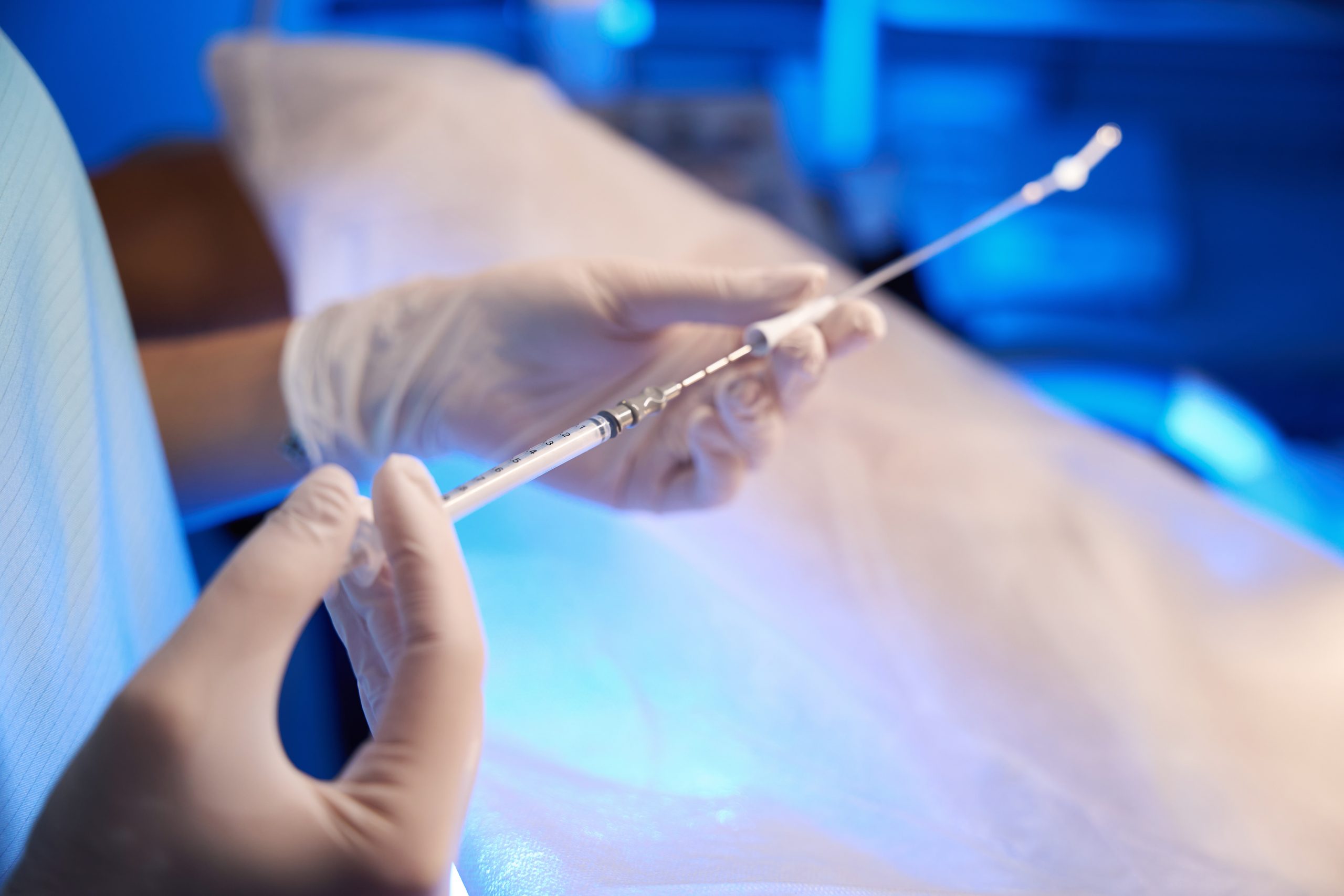Medicated Frozen Embryo Transfer: How it Works

A medicated frozen embryo transfer (FET) is a frozen embryo transfer that uses medications to help thicken the endometrial lining, improve endometrial receptivity, and optimally time the embryo transfer.
A medicated FET (also known as an anovulatory FET) contrasts with a natural or modified natural FET (also known as an ovulatory FET), is the most common method of performing a frozen embryo transfer, and may also be called a programmed FET, or simply FET as most FETs are medicated.
Though medications are used for the majority of women doing a FET, a medicated FET can be particularly beneficial for women with irregular cycles or the inability to develop an adequate endometrial/uterine lining. It also allows for more precise timing of the embryo transfer.
In this article, we’ll explore how a medicated FET works, its benefits, and what to expect during the process.
What is a medicated FET cycle?
In a medicated FET cycle, women will take estrogen and progesterone to thicken the uterine lining and to prepare the uterine environment for implantation of the embryo. Some women may also be prescribed GnRH agonists such as Lupron or birth control for some time to help control the timing of their cycle.
A Frozen Embryo Transfer is an optional stage in an IVF cycle in which frozen embryos from a previous egg retrieval or donor egg cycle are thawed and then transferred into a woman’s uterus.
A receptive uterine lining is crucial for implantation. Hormone levels, the thickness of the endometrium, and the management of any abnormalities such as endometriosis play significant roles. Most of these factors can be assessed and managed by fertility specialists prior to implantation. One of the key ways that these variables can be managed and optimized is by doing a medicated FET cycle.
Alternatives to a Medicated FET
Natural cycle FETs are an alternative to medicated FETs and may be an option for some. Natural FETs can be further delineated into two categories:
True Natural Cycles: The timing of a Frozen Embryo Transfer (FET) is entirely guided by your natural ovulation.
Supplemented or Modified Natural Cycles: The timing is primarily based on your natural cycle, but an hCG shot is administered to trigger ovulation. Sometimes a medication called letrozole is also used to produce an egg for retrieval and to grow the uterine lining.
Since you will ovulate and produce your own progesterone, vaginal progesterone is usually provided for luteal phase support after ovulation and following the transfer. Since we are supplementing progesterone instead of completely replacing it, typically, you will not need the progesterone in oil (PIO) shots.
Frozen Embryo Transfer Medications
Here’s a rundown of the commonly used medications and what they do:
Estrogen
- Why: Estrogen is used to thicken the uterine lining (endometrium) in preparation for embryo implantation.
- How: Usually administered orally or vaginally in pill form. It may also be administered via transdermal patches or injections.
- When: Estrogen usually starts on day 2-4 in the menstrual cycle. The first day of estrogen is typically referred to as “Day 1” in a medicated FET cycle.
Progesterone
- How: Administered as vaginal suppositories, oral pills, and/ or intramuscular injections (progesterone in oil – PIO).
- When: Progesterone is typically started three days before the frozen embryo transfer of a cleavage stage (day 3) embryo or five days before the FET of a blastocyst (day 5) embryo and continued until 10-12 weeks of pregnancy.
GnRH Agonists or Antagonists (Optional)
- Purpose: These medications, such as Lupron, may be used to suppress ovulation and control the timing of the cycle.
- Forms: Typically administered as subcutaneous injections.
- Timing: Depending on the protocol, these might be used in the lead-up to starting estrogen.
Medicated FET vs Natural FET?
A 2023 study found that natural cycle (NC) might be superior to medicated FET cycles, particularly for ovulatory women undergoing their first FET. However, predicting the optimal time for embryo transfer and refining hormonal support protocols are ongoing challenges for non-medicated cycles.
A 2018 study found similarly that after accounting for factors like ovulatory dysfunction, natural cycle single euploid frozen embryo transfers led to significantly higher ongoing pregnancy rates compared to medicated transfers (62.9% vs. 42.9%).
However, a 2018 analysis of 43 studies comparing all forms of embryo transfer found that existing literature does not clearly indicate that one method of endometrial preparation for FET is more effective than another, and that all current approaches to preparing the endometrium seem to be similarly successful in achieving ongoing pregnancy rates.
A 2016 randomized control trial from the Netherlands comparing ovulatory and non-ovulatory cycles for frozen embryo transfers found that while the ovulatory cycle had slightly higher live birth and ongoing pregnancy rates, these differences weren’t statistically significant, meaning they could have occurred by chance. However, the non-ovulatory cycle had a higher rate of cancellations, meaning more patients had their cycles interrupted before the transfer could take place.
The takeaway from these studies is that the success rates between natural and medicated cycles are relatively similar, and therefore, your provider will carefully assess all the factors that should be considered when making the choice.
It’s also important to note that these studies are based on large population sizes. Your fertility journey will be highly personalized based on your specific physiological and logistical needs. To give yourself the best chance of success, it’s important to balance advocating for yourself while following the recommendations of your fertility specialist.
Why Choose a Medicated FET?
A medicated FET cycle may be best for you:
- If you don’t ovulate naturally, a medicated and non-ovulatory cycle is necessary. If you do, or if you respond to letrozole, an ovulatory cycle could work for you.
- If predictability and reduced monitoring are important to you, Medicated FET cycles allow precise scheduling, unlike natural cycles, which depend on the unpredictable LH surge. Early ovulation or detection issues could cancel the cycle, delaying the transfer. Natural cycles, especially without an hCG trigger, often require more blood tests and ultrasounds.
- If travel is involved, natural cycles may be less convenient.
Cost of Medicated FET Cycle
The cost of a medicated FET cycle can vary widely between fertility clinics and depending on what medications you need. The medication alone can range from $500-$1500.
The average cost of a frozen embryo transfer without medications is around $5,000, but it ranges from $1,940 (including the procedure and monitoring) here at CNY Fertility to over $7,000 at other clinics nationwide.
Medicated Frozen Embryo Transfers: The Takeaway
A medicated frozen embryo transfer (FET) uses hormones like estrogen and progesterone to prepare the uterine lining and open the window for embryo implantation.
It is the most common way to perform a frozen embryo transfer and contrasts with a natural FET. A medicated FET is necessary for women who do not ovulate naturally, don’t respond to letrozole, or have trouble growing a uterine lining.
Medicated FET is also particularly beneficial for women with irregular cycles or for anyone seeking to minimize the unpredictability and extensive monitoring associated with natural cycles.
Consult with your fertility specialist to determine if a medicated FET protocol is the right choice for you.

